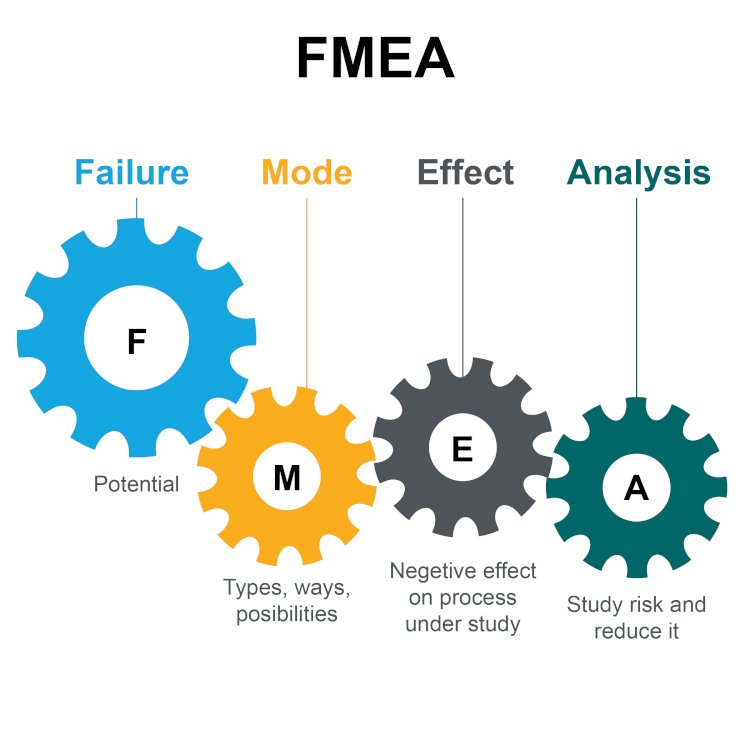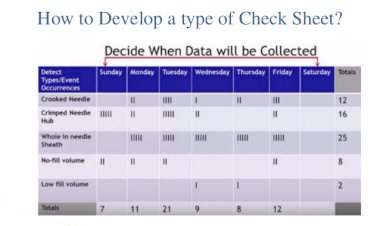How to Reduce the Risks in FMEA?
How to Reduce the Risks in FMEA?

How to Reduce the Risks in FMEA?
FMEA is very dynamic in nature as it is used both as a Risk Identification tool and a Risk Treatment tool. In the Risk Identification phase, all the potential risks related to the process and its major steps are identified and documented along with their impact. The frequency of occurrence of each risk is assessed and current controls to detect them. Then, RPN is calculated for all the risks and the most critical risks are identified for further action.
In the Risk Treatment phase, an Action Plan is formulated either for all the risks or for those risks that have been prioritized as the most important ones. Brainstorming is done by the team either to eliminate the risk altogether or to reduce the impact of the risk on the process.
How to Reduce the Risks in FMEA?
Mathematically speaking, the impact of the process can only be reduced by reducing its RPN value which means reducing either of the Severity, Occurrence or Detection ratings of that risk. While it is difficult to reduce the Severity ratings of a risk as it may involve process change or equipment change increasing the costs to the company, it is relatively easier to reduce either the Occurrence or the Detection ratings.
Occurrence rankings can be reduced by either eliminating the causes of the failure or controlling it root causes. For this, the root causes for the potential failure has to be understood for which the RCA technique would have to be used. The 5 Why tool is an excellent way to accomplish this as it will help in reaching down to the very root of the problem. The Poke Yoke or Mistake Proofing can also be used to reduce the occurrence of the potential failures.
Similarly, Detection rankings can be reduced by evaluating the existing controls and improving them to make them more robust to detect the potential failures before they reach the customers. There are many ways to achieve this whenever any failure is detected such as process fail-safe, SPC, process shutdown, mistake signaling, calibration, validation though SOPs and Work Instructions; and preventive mechanism such as preventive shutdown.
An Action Plan is formulated to reduce the potential risks and their impact. The Action Plan comprises of the solution (decided by the team), person/department responsible and the date by which it will be completed. The Severity, Occurrence and Detection ratings are again decided and RPN is again calculated for each risk to assess whether the RPN has reduced to know if the potential risk has been eliminated or reduced to acceptable levels.
Simple solutions require simple Action Plans which can be incorporated in the FMEA itself and the status can be easily tracked. But sometimes, many Action Plans are so bigger in scope that they are formulated separately. In such cases, specialized documents such as Gnatt Charts or even a separate project can be undertaken to implement the Action Plan and link it with the FMEA.

 Shishu Pal
Shishu Pal 




























Anushtha Jain
The main aim of performing FMEA is to refine the solution before it is implemented or at the beginning of the project. It is performed in order to investigate the possibility of any aberrations during the process. There are 4 strategies one can use to reduce the risks in FMEA. They are: 1. Reduce the cause occurrence: In the FMEA, consider all important RPNs and then select the ones with high occurrence. This high occurrence can be reduced by reducing the frequency of occurrence. Thus, you will be able to reduce consecutive failures. 2. Reduce the impact of failure mode: In case you don’t have the occurrence information, consider the high RPNs and then select the ones with high severity. These selected ones are the ones that have the potential to create the maximum negative impact on customers, businesses, and projects. Hence, by reducing the impact of the effect, you can considerably reduce the risk in FMEA. 3. Improve the ability to identify the risks: In an unfortunate case when none of the above strategies works, consider all the RPNs and then select the ones with the highest detection. This will improve the detection mechanism resulting in us being able to have timely information required in order to prevent the cause or contingency or mitigation. This is a conventional method that focuses on “first priorities first.” 4. A combo of 1, 2, and 3: If all the ratings are high and none of the above strategies can be applied, then you can perhaps use a combo of all three. Follow all of them and you’ll be able to strategically yet quickly reduce the risk associated with FMEA. In case you need some professional advice or assistance, you can visit our website at Visure Solutions and read out the article about Strategies to Reduce Risk In FMEA, and perhaps get in touch with us too.